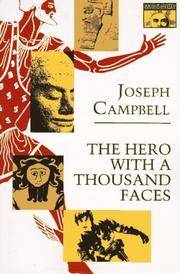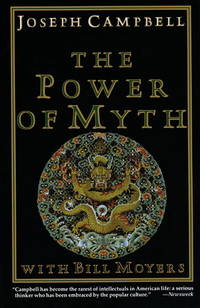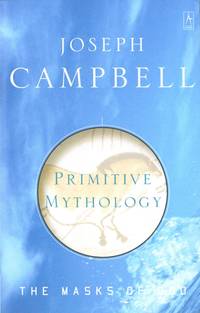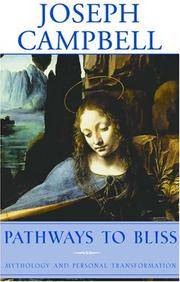Campbell was born and raised in New York City in an upper middle class Roman Catholic family. As a child, Campbell became fascinated with Native American culture when his father took him to see the American Museum of Natural History in New York. He soon became versed in numerous aspects of Native American society, primarily in its mythology. This led to Campbell's lifelong passion with myth and its similar, seemingly cohesive threads among all human cultures. At Dartmouth College he studied biology and mathematics, but later transferred to Columbia University, where he received a Bachelor of Arts degree in 1925 and a Master of Arts degree in 1927.
Campbell is considered by some to be one of the most famous autodidacts, or 'self-educators', and is sometimes seen as a poster child for this way of learning. After completing his master's degree, Campbell decided not to go forward with his plans to earn a doctorate; instead, he went into the woods in upstate New York, reading deeply for five years. According to poet and author Robert Bly, a friend of Campbell, Campbell developed a systematic program of reading nine hours a day. According to Campbell, this is, in a sense, where his real education took place, and the time when he began to develop his unique view on the nature of life.
He went on to study Old French and Sanskrit at the University of Paris and the University of Munich. He learned to speak at least French, German, Japanese, and Sanskrit in addition to English. Campbell began his literary career by editing the posthumous papers of Indologist Heinrich Zimmer. With Henry Morton Robinson he wrote
A Skeleton Key To Finnegans Wake, for which generations of puzzled readers of James Joyce have been grateful.
Campbell studied the ideas of the Swiss psychiatrist Carl Jung, who had been a colleague of Sigmund Freud. Campbell's work in mythology sought to bridge the seemingly disparate stances of Jung and Freud and their pivotal debate over the collective unconscious. Campbell also edited the first Eranos conference papers and helped to found Princeton's Bollingen Press. Another dissident member of Freud's circle who influenced Campbell was Wilhelm Stekel (1868 - 1939), who pioneered the application of Freud's conceptions of dreams, fantasies of the human mind, and the unconscious to such fields as anthropology and literature.
Campbell was a professor at Sarah Lawrence College from 1934 until 1972. He married his student, Jean Erdman, a dancer, in 1938. He died in 1987, in Honolulu.
Campbell relied on the texts of Jung as an explanation of psychological phenomena, as experienced through archetypes. But Campbell didn't agree with Carl Jung on every issue, and certainly had a very original voice of his own. Campbell didn't believe in astrology or synchronicity as Jung had. Campbell's true study and interpretation is in the melding of accepted ideas and symbolism. His iconoclastic approach was as original as it was radical. His take on religion has been compared to Einstein's idea of science in his last days, the search is for a unifying theory. Joseph Campbell believed all the religions of the world, all the rituals and deities, to be "masks" of the same transcendent truth which is "unknowable." He claims Christianity and Buddhism, whether the object is 'Buddha-consciousness' or 'Christ-consciousness,' to be an elevated awareness above "pairs of opposites," such as right and wrong. Needless to say, many religious exclusivists find his ideas heretical.
"Truth is one, the sages speak of it by many names," he often quoted from the Vedas. Joseph Campbell was fascinated by what he viewed as universal sentiments and truths, disseminated through cultures which all featured different manifestations. He wanted to show his idea that Eastern and Western religions are the same on a very basic level, and that nobody is right but everyone is searching for the same unknown, and indeed unknowable, answer. He began to look paradoxically at moral systems as both incorrect and necessary. Like the postmodern relativists he believed such things as 'right' and 'wrong' are just contrived ideas, but also like them he understood a moral system is necessary from the perspective of a student of mythology and psychology. In this way he melded also the concepts of modernism and postmodernism, although some interpretations place him as a postmodernist before his time.
In his four-volume series of books "
The Masks Of God", Campbell tried to summarize the main spiritual threads of the world, in support of his ideas on the "unity of the race of man"; tied in with this was the idea that most of the belief systems of the world had a common geographic ancestry, starting off on the fertile grasslands of Europe in the Bronze Age and moving to the Levant and the "Fertile Crescent" of Mesopotamia and back to Europe (and the Far East), where it was mixed with the newly emerging Indo-European (Aryan) culture.
He believed all spirituality is searching for the same unknown force (which he spoke of as an eminent, rather than transcendent, force, or that which is both within and without, as opposed to only without) from which everything came, in which everything currently exists, and into which everything will return. He referred to this force as the connotation of what he called "metaphors", the metaphors being the various deities and objects of spirituality in the world.
Hero mythology and the monomyth
Heroes played a crucial role in his comparative studies. In 1949
The Hero With a Thousand Faces set out the idea of the monomyth, a streamlined version of all the archetypal patterns Campbell recognized (Campbell's archivist at the Pacifica Graduate Institute says he borrowed the term from James Joyce's novel
Finnegans Wake). The monomyth involves the hero receiving a "call to adventure"; to leave the ordinary world which he has psychologically or spiritually outgrown. After passing "threshold guardians" (often with the aid of a wise mentor or spirit guide) the hero enters a dreamlike world, generally a dark forest, a desert, an underworld or a mysterious island. After a series of trials in which the hero eventually surpasses his mentor, the hero achieves the object of his quest (often an atonement with the father, a sacred marriage or an apotheosis) before returning to his homeland, bringing with him a spiritual boon. Campbell wrote that almost all hero myths, throughout history and across cultures, can be shown to contain at least a subset of these patterns. In contemporary popular culture, three film series, Star Wars, The Matrix, and The Lord of the Rings (along with Tolkien's original The Lord of the Rings trilogy of novels) hew very closely to Campbell's archetypal pattern.
Heroes were important to Campbell because they conveyed, to him, universal truths about how one should live one's life and about an individual's role in society.
Influence
George Lucas has said that he based the Star Wars series on ideas in
The Hero With a Thousand Faces and other works of Campbell. Musician and composer Tori Amos has also acknowledged the influence of Campbell in the ideas on mythology and archetypes she employs on her album projects.
Campbell said James Joyce and Thomas Mann were his gurus. (The Power of Myth, Tape 3)
Campbell's "Follow your bliss" idea was influenced by the Sinclair Lewis's character
Babbitt, who in the book's last page, laments, "... practically, I've never done a single thing I've wanted to in my whole life! I don't know 's I've accomplished anything except just get along. I figure out I've made about a quarter of an inch out of a possible hundred rods. Well, maybe you'll carry things on further. I don't know. But I do get a kind of sneaking pleasure out of the fact that you knew what you wanted to do and did it. Well, those folks in there will try to bully you, and tame you down. Tell 'em to go to the devil! I'll back you. Take your factory job, if you want to. Don't be scared of the family. No, nor all of Zenith. Nor of yourself, the way I've been. Go ahead, old man! The world is yours!"
Campbell also referenced the Sanskrit concept of "Sat Chit Ananda". Sat (Being) Chit (Full Consciousness) Ananda (Rapture). He said, "I don't know whether my consciousness is full consciousness or not, and I don't know if my being is full being or not, so let me hang onto my rapture and that will bring me to both." (
The Power Of Myth)
Chris Vogler, a Hollywood film producer and writer, created a now legendary 7-page company memo, A Practical Guide to The Hero With a Thousand Faces, based on Campbell's work. Vogler's memo was later developed into a book,
The Writer's Journey.
The Writer's Journey later became the basis for a number of successful Hollywood films, most notably, Disney's The Lion King. More recently, it has been taken up by computer game companies in search of new ideas and techniques for storyboarding and developing new products. Responding to those who would view his book as mere plagiarism or debasement of Campbell's complex ideas, Vogler has continually warned against viewing his book as a simple "formula" or "recipe" for writing success. Instead, Vogler encourages writers to delve into the world of archetypes and mythic structures as a deep source of enrichment for their own creative work. Creativity in writing emerges during the (conscious and unconscious) processes of deciding which archetypal elements to use, transmute, or discard.
Criticism
Soon after Campbell's death, Brendan Gill criticized him in an article, "The Faces of Joseph Campbell," published in the New York Review of Books on September 28, 1989, accusing him of "reactionary" political beliefs.A National University professor named Tom Snyder wrote an essay in 1991 entitled "Myth Perceptions: Joseph Campbell's Power of Deceit" that accused him of launching a single-minded vendetta against organized religion.
Campbell's scholarship has also come under attack; and the American novelist Kurt Vonnegut satirized Campbell's views as being excessively baroque by offering his interpretation of the monomyth, called the "In The Hole" theory; loosely defined as "The hero gets into trouble. The hero gets out of trouble."
Works
The Hero with a Thousand Faces (1949) is one of his best-known books: it discusses the monomyth cycle of
The Hero's Journey, a pattern found in many cultures. His four-volume work
The Masks of God covers the world of mythology.
Campbell's widest popular recognition came with his collaboration with Bill Moyers on the PBS series The Power of Myth, which was first broadcast in 1988, the year after Campbell's death in Honolulu. The series presented his ideas on archetypes to millions and remains a staple on PBS. A companion book,
The Power of Myth, containing partial transcripts of their conversations, was released shortly afterward.
A recent compilation of many of his ideas is titled
Thou Art That: Transforming Religious Metaphor. The book explains that religion and mythology are actually the same thing and he puts religious symbology in its proper mythological context. One of Campbell's favorite quotes is that "...Mythology is often thought of as 'other peoples' religions and religion can be defined as mis-interpreted mythology." He explains that by understanding religious symbols not as historical facts but rather as mythological images, the symbols can take on deeper and more-believable meanings for many people.
































